
The city of Nice is a capital of southern France that stretches over the Mediterranean coast on the Cote d’Azur on its particular riverbank, the Baie des Anges. It is an international summer resort since the French and British discovered it for its mild winters. From that time, it is the beautiful trail of excellent hotels that exude charm and allow you to stay in Nice with class and style.
Nice has the charm of a double ancestry that is part of its identity and its unique appeal. Nice is French on the one hand and Italian. The place can not help but be just because of the proximity to Italy – which is just 30 kilometers – or having been part of it until 1860. Yesterday.
Where to Stay in NICE France?
A Nice must be discovered in spring or even in winter when the French Riviera leaves the pressure of vacationers who make their August away. That is the moment to feel at ease with a city that you like just by seeing it.
We go with the description, with the most remarkable of those key places and with some details of where to stay in Nice very close to those points.
1. Old Town
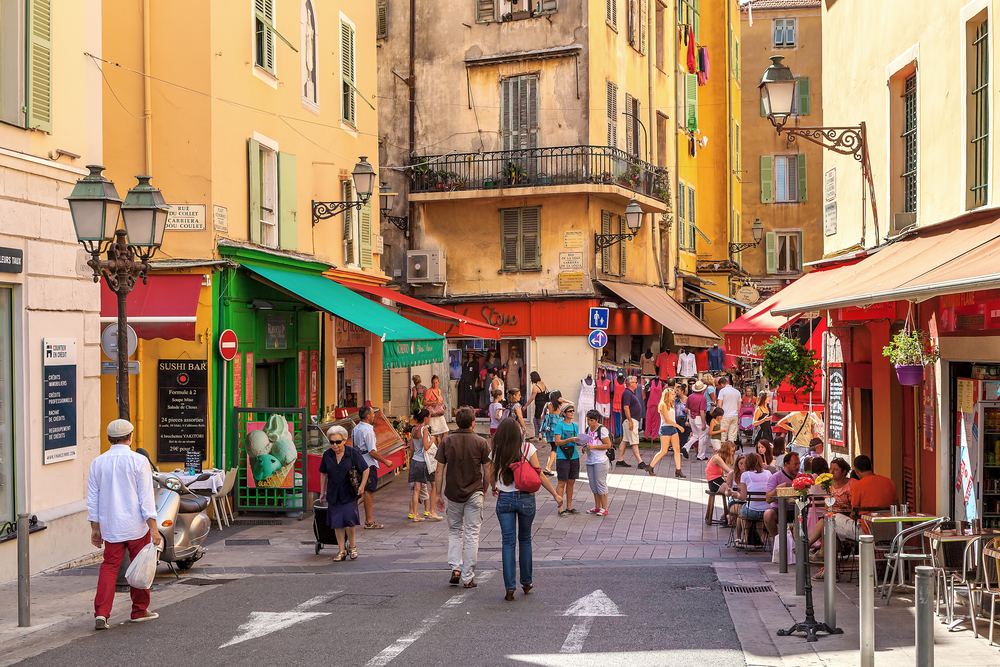
The historic center of Nice is one of the most prominent attractions of the French city. What is said, a must-see? There are countless sites with historical evocations and many unique activities that can be enjoyed both day and night.
The historic center of Nice has a vaguely triangular shape in its place, north of the Paillon River Valley, with Castle Hill at one point and the Mediterranean coast to the south. By the way, the river runs in the city underground, and on it, a landscaped area called Promenade du Paillon has been designed that is a charm to walk and get in touch with nature in the center of everything.
If it is about shopping, a recommendation, walking from Place Masséna following rue St François de Paule, that section is full of elegant shops in period buildings that are a luxury for the eyes.
If there is time, one of them must be visited, the Auer candy and chocolate shop in St François de Paule which was founded in 1820. The interior decoration of the 19th century is superb.
Nearby are the Nice Opera building and two steps away from the Palace Square that refers to Justice Square, as large as it is unattractive.
Later, the streets lead to the Corso Saleya, which is one of the loveliest roads in the old town of Nice and has the peculiarity that it runs parallel to the sea. Something that is also perfect for walkers and for flower lovers, because every morning the center of the road becomes a market for plants and flowers.
In the area, there are many popular restaurants that offer quite affordable prices and some of the most recommended dishes of the Nizarda table. Like the Nizarda salad that tells how close Italian cuisine is to local tastes or niçoise, a type of beef stew, highly recommended. The socca is a crepe made with chickpea flour that has the same Italian influences, in Italy, they recognize it as farinata.
The Corso Saleya road can take the visitor to the promenade, either to see the Baie des Anges from the area of the Castle Hill (right) or continue through the historic center if you take the left hand. In parallel with the Corso Saleya is the rue de la Préfecture, which has bars and pubs where the public comes in the late afternoon.
To the north of this street, the roads are again narrow and only suitable for pedestrians. The alleys of the historic center of Nice protect from the sun and heat in summer, functioning as an ingenious system of driving fresh air from the sea. It must be taken into account in the hottest agostos.
Highly recommended are the nearby terraces of the Place Rossetti to take a break, or ice cream, and admire, before entering, the baroque cathedral of Sainte Réparate, from the 17th century.
A curiosity. The Museum of Modern Art and Contemporary Art of Nice (MAMAC), somewhat away from the central area of the historic center, and located in the area of the Promenade du Paillon Park, represents a golden opportunity for the most vivid avant-garde art lovers. It is very close to the official headquarters of the National Theater of Nice, another prominent cultural landmark of the French city.
To move to other parts of the city from the center of Nice, you can use the bus or the tram (bus lines in all directions and tram line 1, at the Opera-Vielle Ville, stops). To move to other neighboring cities, the suburban train. The train station is a 20-minute walk from the center on Jean Médecin Avenue.
The bus station, for the same connections, can be found on Avenida des Diables Bleus, somewhat away from the center. Next, to the Albert I Gardens, there is the main stop of the city’s tourist bus service.
To stay in Nice, the historic center is perfect. It allows us to be close to everything. In the area, there are hotels of all categories that offer varied prices. Cheaper if you travel in winter in low season.
2. Jean Médecin Avenue
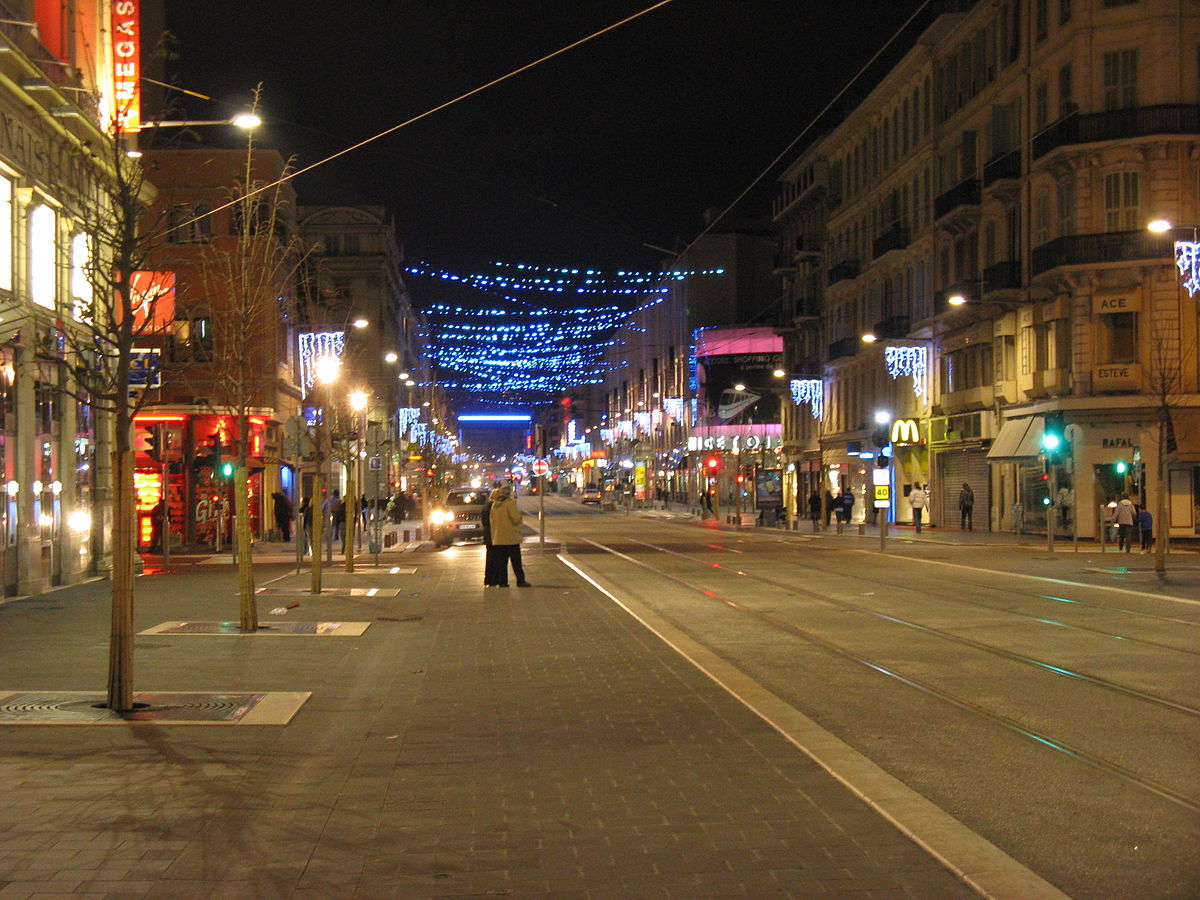
Jean Médecin Avenue is the most important commercial and leisure area in the city of Nice. Restaurants, theme bars, cinemas, and shopping centers abound. The avenue starts in the area of the Fountaine du Soleil, on the Promenade du Paillon and reaches Voie Pierre Mathis after a kilometer and a half of the route. The Jean Médecin route divides practically Nice in two.
There is a lot of fashion to see in the area, for example, in the Lafayette Galleries store in the city or at the Nice-Etoile shopping center. By Colette, at number 31 on the street, there is a fashion store with exclusive creations worth stopping at. There is the data.
Around the avenue, there are monuments and buildings that can be interesting. Among them, that of the Church of Our Lady of the Assumption. It is the largest temple in the city and was built in the mid-19th century in a historicist Gothic that reminds a lot of the Notre Dame de Paris Cathedral.
In this part of the city and in Nice in general, you should not miss the central events of the Carnival of Nice. Especially, the parades of floats of the Battle of Flowers. Floats that can be seen adorned with mimosas, the representative flower of the city.
The carnival is celebrated on variable dates of the months of February and March. The end of the Jean Médecin Avenue coincides, the opposite of the one that occupies the historical center, the one of the raised sense, corresponds to the location of the Nice Train Station (Gare de Nice Ville).
The station offers the option of having nearby how to travel to other locations on the Côte d’Azur on self-designed excursions. Tram line 1 runs along the avenue and is a good way to get to the historic center.
Sleeping in Nice in the surroundings of this station, offers two advantages, more reasonable prices in mid-level hotels, and the proximity to a key means of transport to travel and move around the region.
3. Promenade des Anglais
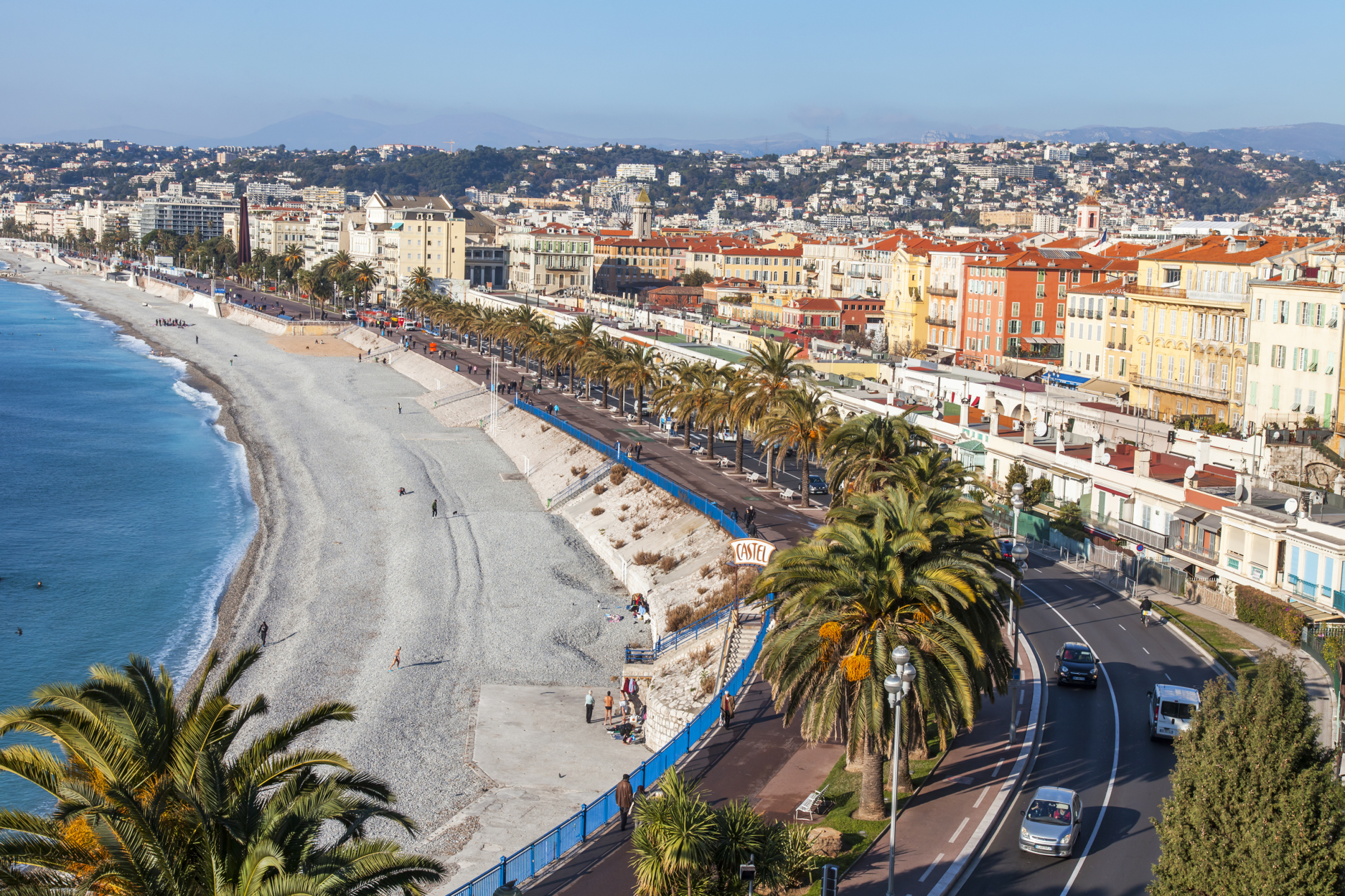
Promenade des Anglais is a neighborhood in the center of Nice that is articulated around a promenade located west of the historic center and on the Baie des Anges.
The limit inside the city is on Víctor Hugo Boulevard. The avenue, whose route reaches the Nice-Côte d’Azur International Airport, is a perfect place to stroll in the late afternoon with the cool one. On foot or by bicycle with its bike lane.
The place is full of palaces, casinos, luxury hotels and residential buildings and villas that overlook the Mediterranean Sea between gardens and palm trees. If it’s all about staying in Nice in style, luxury hotels are not lacking in this district.
Of course, the surrounding shops and restaurants are equally exclusive. But there is more to see in the surroundings. Of course, a key attraction, especially on summer days, is the beach. A beach that has all the services and that is kept extraordinarily clean. Water and sand
A small jewel in the area is the Palais Baréty, built at the end of the 19th century by the architect Barbert in a very peculiar style. Look for the ox heads embedded in the top of the facade to check the unusual design.
In the area, we must not miss the Masséna Palace Museum, a museum space dedicated to the history of the city. The Italian-style palace in which it is located is another jewel. Another unique set is that of the Nice Anglican Church.
4. Le Port

Le Port is the port area of the city of Nice. And a residential district that is organized around a small cove that houses the city’s marina and fishing port.
The port is backed by Mont Boron which is the largest urban park in Nice. The views from its heights and the old city are amazing. The local trail network represents an opportunity to exercise and see Nice above the shoulder (maximum height, 191 meters).
The port occupies an area of 17 hectares of which seven are wharves. The port, which was conditioned as such in the eighteenth century, is the point of landing of cruises that follow itineraries through the western Mediterranean.
The bus on line 81 allows the traveler to move around Mont Boron and approach not far from the historic center, to Garibaldi Square, beginning and end of the line.
The Le Port area is ideal for staying in Nice in another way and well-taking advantage of the offer of apartments and holiday homes that abound in the place, either in category hotels or even in high-level rental villas.
5. Gambetta
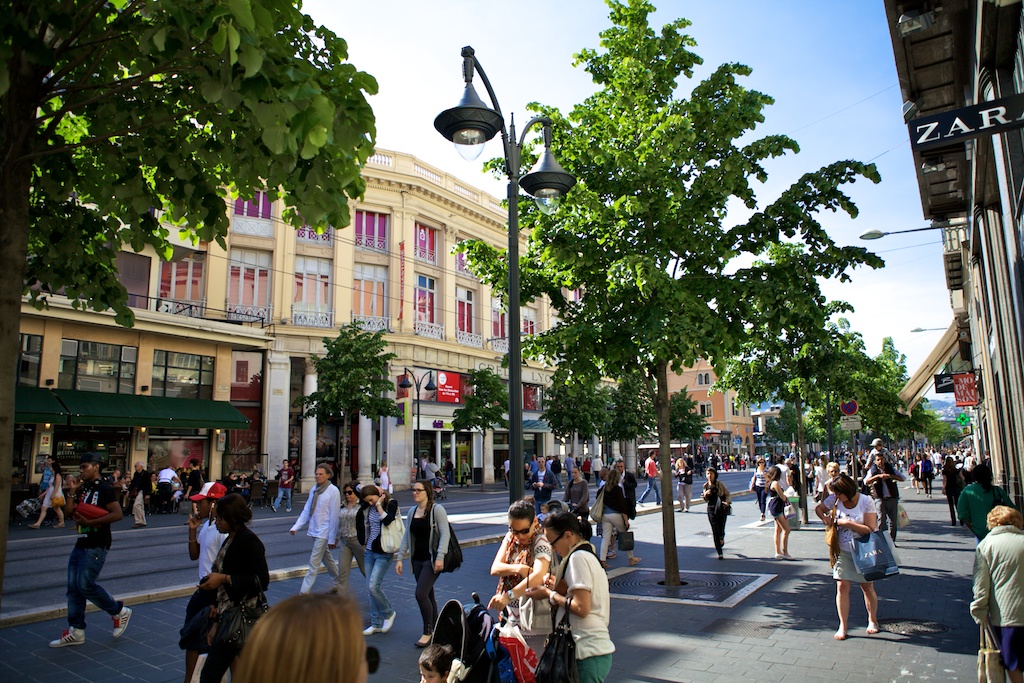
Gambetta is a small neighborhood of Nice located south of the city, on the edge of the sea and on the Baie des Anges. The sea and the ring road Voie Pierre Mathis are its extremes. It is a residential neighborhood that, in recent years has become a tourist district by adopting its housing plant with numerous hotels, tourist apartments, and holiday homes that offer to sleep in Nice at reasonable prices.
The nearby Museum of Fine Arts in Nice offers visitors an opportunity to see contemporary French art, in their backgrounds, but also international avant-garde art in specific exhibitions. To do this, you have to be aware of the programming that can be known updated on your web portal. It is a perfect complement after a visit to MAMAC.
Outside the area of the neighborhood, it is true, but somewhat to the north, passing the Voie Pierre Mathis, the traveler can take a leap to discover a unique architectural landmark, that of the Russian Orthodox Cathedral of St. Nicholas, which looks like a piece of the Red Square in Moscow moved to southern France, as is.
To move around the area, tram line 1 stops at the Gambetta surface station, bus lines 3, 7, 10 and 22 cross the neighborhood parallel to the coastline in the middle of the neighborhood.
6. Cimiez
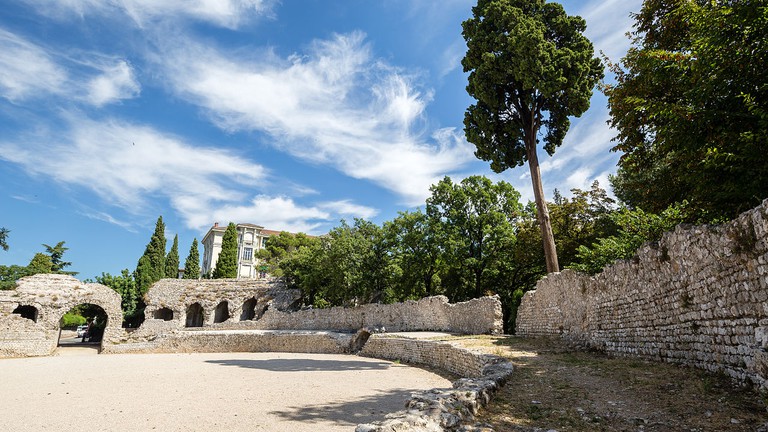
Cimiez is a neighborhood in the northeast of the city of Nice that takes its name and sits on a hill of the same denomination. In Cimiez, you have to look for a dedicated time to meet the essences of the painter Matisse in his museum.
An opportunity to discover the style of this revolutionary impressionist painter but also the architectural ideal that is discovered in the same palace, a representation of the Genoese mansions on the other side of the French border.
Precisely, at the nearby Hotel Regina, Matisse stayed during one of his most creative stages. Today the old luxury hotel is a residential building. Also next to the museum, are the Roman remains of Cemenelum, a settlement from the Imperial era that rise above a previous Ligurian town from the 3rd century BC.
The Archaeological Museum of Nice that is in the same area is the perfect space to interpret the city’s remote past. It is at number 160 of Arenes de Cimiez.
Another place to see in Nice is the Cimiez Hospital, a hospice of charity built in the eighteenth century that currently functions as a geriatric center. And something even more prominent, the whole of the Franciscan Monastery of Cimiez. It retains its old 16th-century church, its cemetery, and very beautiful gardens.
As regards the celebrations of the Nice calendar of events: two notes. In July, in the gardens of the Arènes de Cimiez, a jazz festival is held that is among the most important internationally. It has been celebrated since 1948.
To get close to Cimiez, the bus of line 17 that leaves, or arrives, from the Exhibition Palace.
In the Cimiez area, there is an important representation of urban hotels that give housing coverage to the events held in the nearby Acropolis Congress Palace. These are establishments that allow you to stay in Nice in comfortable hotels, with all services and a short distance from the main attractions of Nice.
Nice is that pearl of the Côte d’Azur that must be discovered as a sensible alternative to the destinations that couché paper has put on the map.
If you liked this article about the where to stay in nice France, don’t forget to visit Diani Beach.
